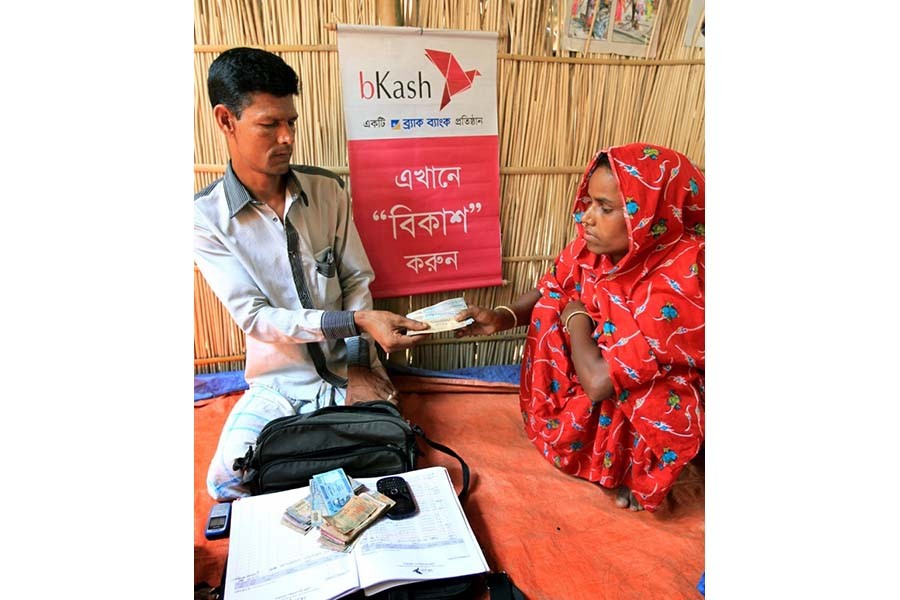Agriculture seems to be gradually losing its preference in attracting labour force. For example, farming is now the primary occupation of roughly 60 per cent of the employed labour force but its share was about 70 per cent in the 1980s. In terms of secondary occupation also, agriculture does not appear to be as lucrative as before. This implies that agriculture is failing to retain its dominance for employment generation in rural areas. Secondly, when all agricultural activities are on a down-side, the mind-blowing change has occurred in case of agricultural labour.
But with a view to delving deep into the dynamics of rural livelihood system, there is a need to observe the structural changes in the occupational status of the labour force. Arguably, the poorest of the poor in rural areas comprises agricultural labour. In the 1980s, one-fifths of the employed persons took up farming as primary activity; the share dropped to 13 per cent or so in recent years. Again, it lost its appeal as a secondary occupation also. Thirdly, while the sun was setting for agriculture in attracting labour, non-agricultural activities witnessed a sun-rise and emerged as the major earner of rural livelihoods. For example, the proportion of employed labour in this sector rose from nearly one-thirds in the 1980s to more than one-half now. But, the share tapered off after 2000 pointing to the stagnancy in growth of these activities in post-2000 years. However, both as primary and secondary occupations, non-agricultural sector has emerged as the preferred occupation of the rural labour force. Fourthly, it appears that a significant proportion of the poor labour force (in per-capita income scale) has taken up non-agricultural labour. Possibly, in this case, they were pulled by relatively higher wage to make a better life.
Finally, we refer to the Multiple Occupation Index. It stood roughly at 132 in the 1980s, implying involvement of employed population in more than one occupation for economic solvency. In recent times, however, the index fell to 126 indicating that economic hardships declined to some extent. However, the rise of the index at that time possibly points to growing economic hardships arising out of inflationary pressure in the economy. By and large, it can possibly be argued that economic vulnerability or economic risks of the rural labour force diminished over time although internal and external shocks in later periods affected livelihoods to some extent.
It can be argued that: (a) farming is still the dominant source of employment generation in rural areas although the status has weakened somewhat over time; (b) the share of agricultural labour has dwindled drastically; (c) labour force is now growingly engaged in non-agricultural activities; (d) the incidence of multiple index has been reduced as compared to the base year and (e) relatively, full-time employment assumed more prominence over the years.
The story that we have presented above about the sun-setting of agriculture applies both to male and female labour force. This means, none of them appears to have taken up agriculture as a primary occupation. The male labour force marginally shifted away from activities relating to crop production; the females largely rejected these activities. May be, economic hardships had once forced them to participate in crop production but, over time and with growing solvency, they no longer take part in field-level activities. However, a glance at occupational status over time shows that agricultural labour has been 'missing' in rural areas with significant drop in its proportion. On the other hand, the proportion of female agricultural labour force has increased from 4.0 per cent in the 1980s to more than 20 per cent. It is possible that the female labour force replaced their spouses in the fields.
Secondly, both male and female workers are now more attracted towards non-agricultural activities. In fact, as primary occupation, the share of male labour force doubled over time. Besides, traditionally a large part of the female labour force had always been involved in non-agricultural activities such as paddy husking by 'dheki', handloom, etc. But over time, these activities have changed. However, not only as primary occupation but also as secondary occupation, non-agricultural activities stole the march. The implications of this structural change in occupation need mention. Over time, rural livelihoods have increasingly tilted towards non-agriculture. The question is: where is the 'missing' labour?
May be, a part of them went to the non-agricultural labour market lured by higher wages. This appears to be true when male labour force participation in non-agricultural labour went up from about 7.0 per cent to 20 per cent. Note that this proportion is close to the 'missing' labour from agriculture that we mentioned before. The other part of the 'missing' labour went to business and service-related activities. Another important change to cite is the drastic fall of female labour force in business. It could be that driven by economic hardships in the past, they were forced to take up outside-home activities to pursue livelihoods. But, over time, economic hardships relatively eased to pull them back into household works. In this context, we can especially mention construction works where the share of female labour force is now 8 per cent as against 16 per cent in 1988. We presume that those who left construction and business are now engaged in homestead-based agricultural activities.
And finally, the multiple occupation indexes for males have come down from 140 to 137 - indicating an increase in economic security somewhat. However, remarkable improvements occurred in the case of female labour force with the index falling from 160 to 130 - implying catching up with the males over time.
The writer is a former Professor of Economics at Jahangirnagar University.


